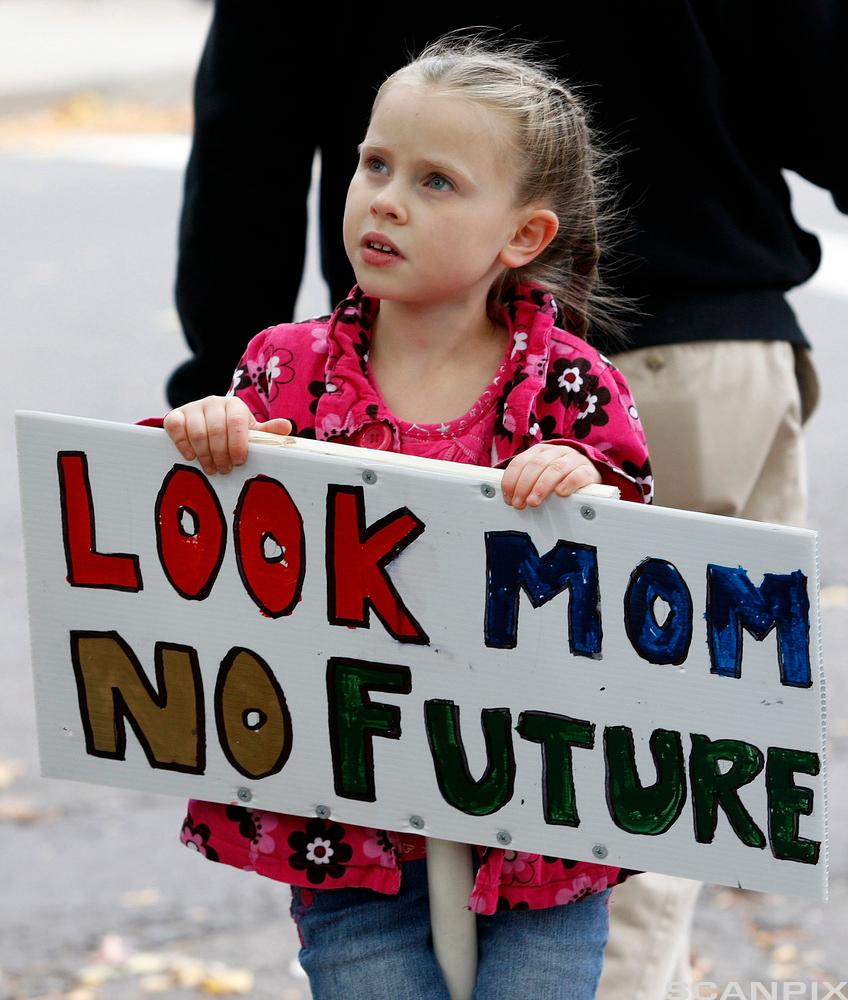Occupy Wall Street

The 99 Percent Movement
Occupy Wall Street is a grass root movement that was started spontaneously in New York in September 2011. It has since then spread to cities all over America and also to central cities in Europe. The movement was initiated by students and activists who mobilised ordinary people for a peaceful demonstration on Wall Street, New York City. The initiative comes in the wake of the so-called financial crisis, and is aimed at banks, finance companies and wealthy institutions. The activists also call themselves The 99 Percent Movement, which is a reference to the fact that more than half of the country’s total financial assets are in the hands of only one percent of the population.
Hippies on Lower Manhattan

The movement has got massive media attention, and has attracted celebrities like Michael Moore and the actor Alec Baldwin. Media has also focused on how the demonstrators were met brutally by the police with the use of pepper spray and mass arrests. At a rally in the last week of September the police arrested 700 activists who had occupied Brooklyn Bridge. Lower Manhattan (where Wall Street is located) has over the last weeks turned into a vibrant venue with posters, singing, balloons and sleeping-bags in the parks, not unlike the hippie movement in the 60s and 70s. Only this time the agenda is not the war in Vietnam, it is protesting against what they see as an unfair system and an America on the wrong track.
Political Influence
Like the revolutions in North Africa the protest can be followed on Twitter and Facebook; the movement also has its own information centre, library, and music – they even have their own newspaper called Occupy Wall Street Journal. The movement has the support of trade unions that also want a more substantial regulation of banks and financial institutions. The group has been launched as a left-wing response to the Tea Party Movement, but commentators claim that this movement will not gain that kind of political influence, mainly because it is too badly organised and too spontaneous. The unbalanced spread of wealth in the USA may well be seen as unfair, but it is a given consequence of the country’s liberal economic system. So for the movement to have any significant influence on the distribution of wealth and regulation of the bank system, they will probably have to address the issue in a political arena rather than in the parks on lower Manhattan.
Further research
- Check out the movement’s own web site in the link collection and see more information on Twitter: @occupywallstnyc
- The Tea Party Movement is mentioned in the article. If you don’t know, go on the net and find out what that is.
Discussion
- Would you have joined an Occupy Wall Street protest? Why / why not?
- Can you think of examples where popular movements like this really have made a difference and brought on a change for ordinary people?
- Would you like to ask the activists what they are rallying for? Go on their web site (above) and follow the chat link.
- Watch the video below and discuss what the two friends say about being passive and about inheritance. Do you agree with them or are they being naive?
Creative Writing
Study the Movement’s homepage and its comments on Twitter and make artistic posters that you think capture the Movement’s views. Remember that the poster should get attention (A), stir interest (I), create a desire (D) and lead to action (A). Afterwards exhibit your posters and discuss how they comply with the AIDA criteria listed above.
Further research
Why do you think the 99 Percent Movement chose Wall Street as a primary location? What is the symbolical significance of this choice?
Relatert innhold
Nettside hos occupywallst.org